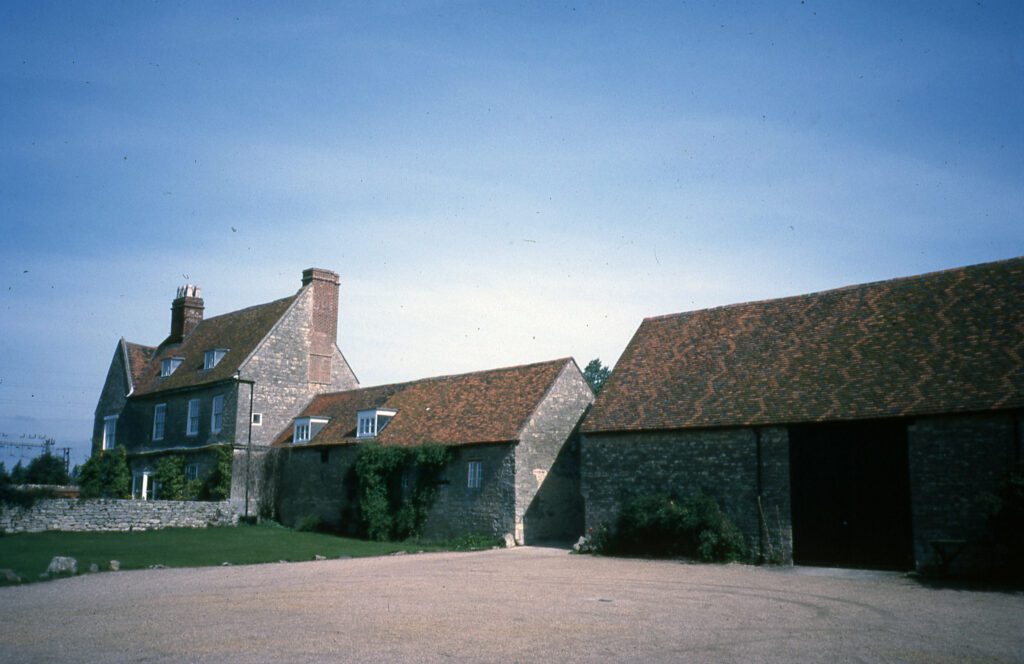Bradwell Abbey – pilgrims, paintings and prayers
Posted 25th February 2019
When the word pilgrimage in mentioned, your first thought probably isn’t of Milton Keynes.
But actually, one corner of the city has proved a powerful magnet for not one but two waves of pilgrim – and almost a millennium separates the two.
The first pilgrims arrived by foot or on horseback, having spent days slogging along Watling Street to reach the Chapel of St Mary within the grounds of the Benedictine Priory of Bradwell, known as Bradwell Abbey.
They sought an audience with a statue of the Virgin Mary which had become famous for its powers of healing – it was even said to work the occasional miracle!
The second wave arrived by coach, train and plane: urban designers, city planners and academics from all over the world, visiting the City Discovery Centre – which now occupies the Bradwell Abbey site – to learn how to create a new city, something Milton Keynes knows lots about.
Unique
We know about the medieval pilgrims because their arrival, bearing gifts, was recorded in wall paintings, some of which are unique in the UK.
For many years the paintings had lain hidden underneath layers of whitewash, applied by farmers who had used the derelict chapel for storage. But when water leaked through the roof and began to dissolve the wash in the 1950s, the important paintings which had been covered for around 300 years were rediscovered.
The paintings are fine examples of the period, and some are unique in this country – paintings on the south wall depict pilgrims visiting the shrine and kneeling to offer images of the sick parts of their body to the statue of St. Mary for cure or relief.
The Great Barn was used by the monks to store grain and other produce paid to the Priory by their tenants, and income was also raised by the aforementioned pilgrims visiting the chapel, which was added to the main church in 1350.
The Abbey had stood firm and survived two outbreaks of the Black Death, but it was no match for Henry VIII’s break from Rome and the dissolution and plundering of the monasteries.
In the centuries that followed, enterprising locals carted off anything that could be useful in building their own homes. A visitor to the site in 1844 was horrified to find the Chapel being used as a stable! At the start of the 20th century it had been turned into a carpenter’s shop, complete with horse and manger.
By the time Milton Keynes Development Corporation was formed, all that remained was the Abbey’s bakehouse, thrashing and tithe barn – and the small 14th century Chapel of St. Mary.
But not only were Milton Keynes’ creators committed to preserving this area’s historical roots – the new city is said to be one of the most archaeologically-studied areas in the UK – they also knew that their bold experiment in creating a new city at the end of the 20th century was as historically significant as anything that had gone before.
With huge foresight they set up Milton Keynes City Discovery Centre to act as custodian of the chapel and all that remains of the Bradwell Abbey – together with the modern archive and library that tells the story of the design, planning and construction of Milton Keynes.
Time trail
Visitors wanting to explore this small, but rich important historical site, can wander freely in the tranquil space just a few minutes drive away from the bustling ‘new town’ and its imposing new builds. Unspoiled and alluring, it’s not hard to imagine the ghosts of visitors past.
It’s a perfect place to visit while using the Loughton Valley Park which meanders its way from south to north of the city and runs alongside the abbey.
The chapel is still consecrated and was last used in 1978 when local people came on a pilgrimage to the shrine.
The beauty of the chapel is currently hidden beneath tarpaulin to protect it from the elements before restoration work is undertaken later this year.
MKCDC also runs hands-on educational days for schools and colleges, covering history and geography at all levels. The beautiful site and its historic buildings are also available for hire for weddings and other functions.
> Visit www.mkcdc.org.ukor call 01908 227229 for more information on MKCDC or Bradwell Abbey, to enquire about volunteering, and to access a full list of all upcoming events.
> This feature was written by Milton Keynes Museum. To find out more about events happening at the museum in March, including the HERstory in objects exhibition and afternoon tea on Mothering Sunday visit www.miltonkeynesmuseum.org.uk
